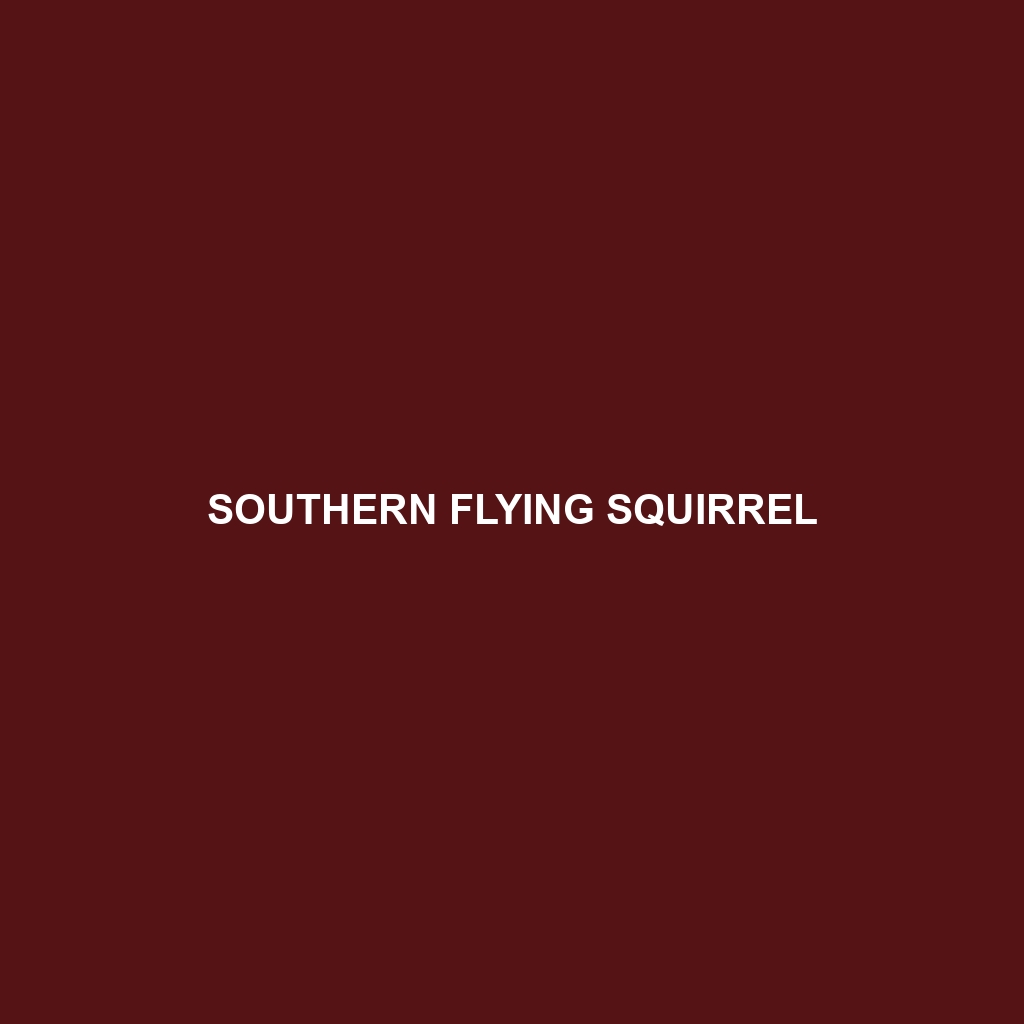Southern Flying Squirrel (Glaucomys volans)
Common Name: Southern Flying Squirrel
Scientific Name: Glaucomys volans
Habitat
The Southern Flying Squirrel is primarily found in the eastern United States, thriving in a variety of forested environments. Favoring deciduous forests, this species often inhabits areas with mature hardwood trees. They are also observed in mixed forests and suburban woodlands where suitable nesting sites, such as tree cavities, are available. Their geographic range extends from southern New England, through the Midwest, and down into the southeastern United States, making them a common sight in regions like Florida and Texas.
Physical Characteristics
Southern Flying Squirrels are small rodents, typically weighing between 4 to 5 ounces and measuring about 8 to 10 inches in length, including their bushy tails. They possess a soft, grayish-brown coat on their upper body, with a lighter, cream-colored underside. One distinctive feature of the Southern Flying Squirrel is the large membrane extending from their wrists to their ankles, allowing them to glide gracefully through the air. Their large, dark eyes enhance their night vision, making them proficient nocturnal travelers.
Behavior
This species is predominantly nocturnal, exhibiting active behaviors during the night. Southern Flying Squirrels are social creatures, often living in colonies that foster communal care of young. They are known for their gliding abilities, swooping from tree to tree thanks to their patagium, which aids in propulsion and mobility. Their playful nature is often displayed during their active foraging sessions, where they communicate through a series of chirps and squeaks.
Diet
Southern Flying Squirrels have an omnivorous diet that primarily includes nuts, seeds, fruits, and fungi. They are known to be particularly fond of acorns and walnuts, which they hoard in preparation for winter months. Additionally, their diet may include insects and other protein sources, showcasing their adaptability in food selection based on seasonal availability.
Reproduction
The reproductive season for Southern Flying Squirrels generally occurs twice a year, in late winter and late summer. After a gestation period of about 40 days, females typically give birth to a litter of two to five offspring. The young are born blind and hairless, relying solely on their mothers for warmth and nutrition. As they mature, they begin to explore their environment and learn essential skills, eventually leaving the nest at about ten weeks old.
Conservation Status
According to the IUCN Red List, the Southern Flying Squirrel is currently listed as Least Concern, though habitat loss and fragmentation pose ongoing threats to their populations. Conservation efforts focus on preserving their natural habitats and promoting awareness of their ecological role in forest ecosystems.
Interesting Facts
One fascinating aspect of the Southern Flying Squirrel is their ability to glide up to 150 feet in a single leap, performing acrobatic maneuvers in the air. Additionally, these squirrels have been documented using their tail as a rudder while gliding, showcasing their unique adaptation to arboreal life.
Role in Ecosystem
Southern Flying Squirrels play a crucial role in their ecosystem as seed dispersers. By transporting and storing nuts, they contribute to the growth of new trees, thereby supporting forest regeneration. Moreover, they serve as prey for various predators, including owls and hawks, thus maintaining the balance within the food web of their habitats.
